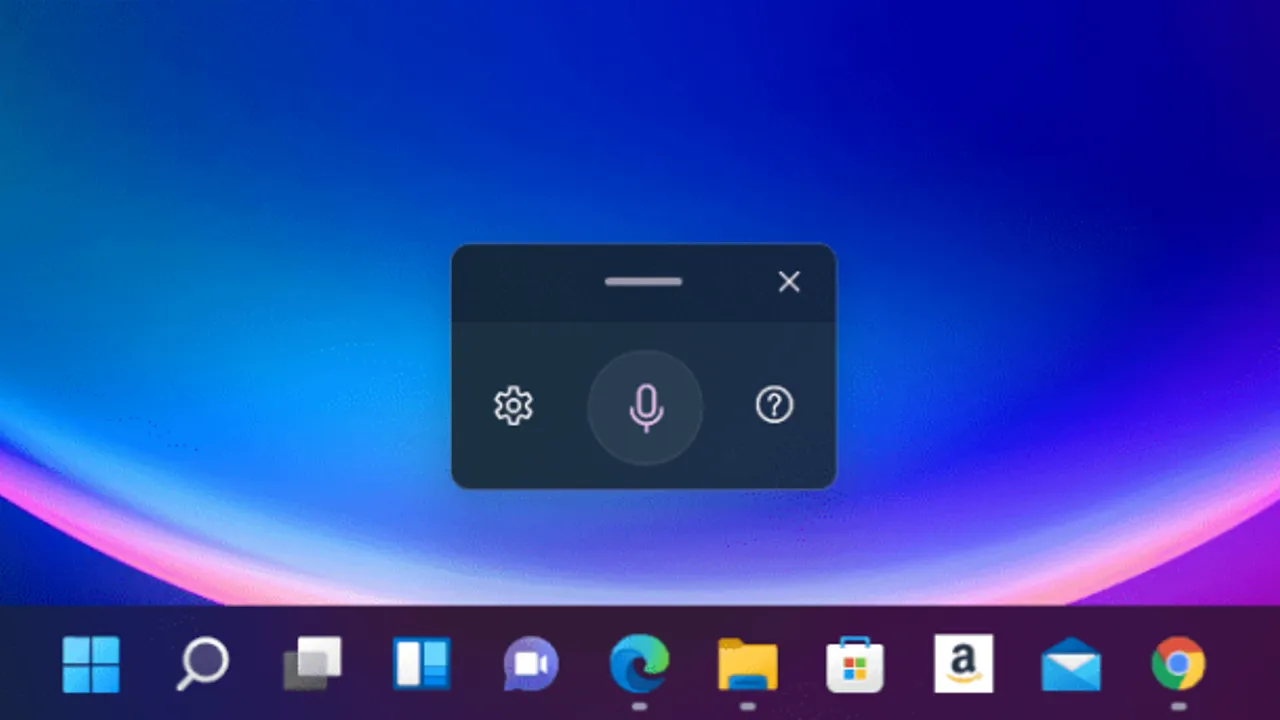In today’s digital age, the protection of sensitive information is of utmost importance. Whether it’s guarding our personal data or securing our online accounts, passwords play a vital role in safeguarding our digital lives. But have you ever wondered how secure your passwords really are? Welcome to “Unlocking the Power of Password Cracking:
A Step-by-Step Guide to Installing Hashcat on Windows.” In this comprehensive guide, we will take you through the fascinating world of password cracking and introduce you to Hashcat, a powerful tool used by ethical hackers and security professionals to test the strength of passwords.
Whether you’re a curious tech enthusiast wanting to enhance your knowledge or an aspiring cybersecurity professional looking to sharpen your skills. This guide will provide you with the essential knowledge and step-by-step instructions to get started with Hashcat on Windows. Get ready to delve into the world of password cracking and unlock the secrets to stronger digital security!
Complete Guide to Using Mask Attack With Hashcat
Understanding Hash Functions and Encryption
To comprehend the fundamentals of password cracking, it’s crucial to understand the concept of hash functions and encryption. A hash function is a mathematical algorithm that takes an input (in this case, a password) and generates a fixed-size string of characters, known as the hash value or hash code.
This process is irreversible, meaning you cannot derive the original password from the hash value alone. Encryption, on the other hand, involves transforming data into an unreadable format using an encryption key. Hash functions and encryption are essential components of password security, as they ensure that passwords are not stored in plain text.
However, with the advancement in computing power, traditional hashing algorithms have become vulnerable to various hacking techniques. One of the most prevalent methods used by ethical hackers and security professionals to assess password strength is password cracking. Password cracking involves attempting to guess or discover passwords by systematically testing all possible combinations or using precomputed tables of password hashes.
Hashcat, the subject of this guide, is a powerful password cracking tool that utilizes the computing power of modern GPUs to accelerate the cracking process. By understanding the inner workings of hash functions and encryption, you’ll be better equipped to grasp the significance of tools like Hashcat in evaluating the security of passwords.
What is Hashcat?
Hashcat is an open-source, advanced password recovery tool used for password cracking. Developed by Jens “Atom” Steube, Hashcat is renowned for its speed and versatility in cracking a wide range of hash types, including MD5, SHA-1, NTLM, and many others.
It leverages the power of modern GPUs to achieve unparalleled processing speeds, making it a go-to tool for security professionals and researchers. Hashcat supports various attack modes, including dictionary attacks, mask attacks, hybrid attacks, and rule-based attacks, providing flexibility and customization options to suit different cracking scenarios. Whether you’re testing the strength of passwords for an organization or conducting research on password security, Hashcat is a valuable tool in your arsenal.
Benefits of Using Hashcat for Password Cracking
Using Hashcat for password cracking offers several advantages over other password recovery tools. Firstly, Hashcat is highly optimized for GPU acceleration, allowing it to perform password cracking at lightning-fast speeds. Modern GPUs have thousands of cores, which Hashcat harnesses to perform parallel processing, significantly reducing the time required for cracking passwords compared to CPU-based approaches. Additionally, Hashcat supports distributed cracking, enabling multiple systems to work together in a coordinated manner, further enhancing cracking speed and efficiency.
Another notable benefit of Hashcat is its extensive hash type support. It can crack a wide range of hash algorithms commonly used in various operating systems, databases, and applications. This versatility makes Hashcat a valuable tool for assessing password security in diverse environments. Moreover, Hashcat allows for highly customizable attack modes, enabling users to tailor their cracking strategies based on specific requirements. From dictionary attacks to rule-based attacks that apply transformation rules to wordlists, Hashcat provides flexibility to adapt to different cracking scenarios.
System Requirements for Installing Hashcat on Windows
Before diving into the installation process, it’s essential to ensure that your system meets the necessary requirements for running Hashcat. Since Hashcat leverages GPU acceleration, having a compatible GPU is crucial. Ideally, you should have a modern NVIDIA or AMD GPU with CUDA or OpenCL support. Hashcat’s performance varies depending on the GPU model, so it’s recommended to use a high-end GPU for optimal cracking speed. Additionally, you’ll need a Windows operating system (Windows 7 or later) and the latest GPU drivers installed.
Apart from the hardware requirements, you’ll also need to have the appropriate software dependencies installed. Hashcat relies on a few libraries, namely, OpenCL runtime, OpenSSL, and zlib. These libraries are typically bundled with the GPU drivers, but you may need to install them separately if required. Ensuring that your system meets these requirements will pave the way for a smooth installation and usage of Hashcat on Windows.
Step-by-Step Guide to Installing Hashcat on Windows
Now that we have a solid understanding of the concepts and benefits of using Hashcat, let’s walk through the step-by-step process of installing Hashcat on a Windows system. Follow these instructions carefully to set up Hashcat and get ready for password cracking.
1. Download Hashcat: Visit the official Hashcat website (https://hashcat.net/hashcat/) and download the latest version of Hashcat for Windows. Choose the appropriate binary package based on your system architecture (32-bit or 64-bit).

2. Extract the Hashcat Archive: Once the download is complete, extract the contents of the Hashcat archive to a location of your choice. You can use a file archiving utility like 7-Zip to extract the files.
3. Install GPU Drivers: Ensure that you have the latest GPU drivers installed on your system. Visit the respective GPU manufacturer’s website (NVIDIA or AMD) to download and install the latest drivers compatible with your GPU model.
4. Open a Command Prompt: Press `Win + R` to open the Run dialog box, type `cmd`, and press Enter. This will launch the Command Prompt.
5. Navigate to the Hashcat Directory: In the Command Prompt, navigate to the directory where you extracted the Hashcat files using the `cd` command. For example, if you extracted the files to the `C:\Hashcat` directory, you would use the command `cd C:\Hashcat`.
6. Test Hashcat Installation: To verify that Hashcat is installed correctly, run the command `hashcat --version`. If Hashcat is installed properly, you should see the version information displayed in the Command Prompt.
Congratulations! You have successfully installed Hashcat on your Windows system. Now that Hashcat is up and running, let’s explore some additional configurations and techniques to maximize its performance and effectiveness.
Configuring Hashcat for Optimal Performance
While Hashcat works out of the box, tweaking certain configurations can enhance its performance and improve the chances of cracking passwords. Here are a few key configurations to consider:
1. **Choosing the Right Attack Mode**: Hashcat supports various attack modes, each with its own strengths and weaknesses. Depending on the nature of the passwords you’re cracking and the available information, you can select the most suitable attack mode. For example, dictionary attacks are effective when you have a list of potential passwords, while mask attacks are useful when you have knowledge about the password pattern.
2. **Optimizing Workload Distribution**: Hashcat allows you to distribute the workload across multiple GPUs or systems, improving cracking speed and efficiency. By utilizing distributed computing, you can harness the power of multiple GPUs or systems working in parallel.
3. **Fine-Tuning Rule-Based Attacks**: Rule-based attacks in Hashcat involve applying transformation rules to wordlists to generate variations of potential passwords. These rules can significantly increase the chances of cracking passwords by generating permutations based on common patterns. Experimenting with different rule sets and combinations can yield better results in cracking passwords.
By understanding and configuring these aspects of Hashcat, you can maximize its potential and achieve faster and more accurate password cracking results.
Generating and Using Wordlists for Password Cracking
Wordlists are a crucial component of password cracking, as they form the basis for dictionary attacks and rule-based attacks. A wordlist is essentially a text file containing a list of potential passwords that Hashcat will attempt to crack. While Hashcat comes with a default wordlist, creating custom wordlists tailored to the target environment can significantly improve cracking success rates. Here are a few methods for generating and using wordlists in Hashcat:
1. Using Prebuilt Wordlists:
Numerous prebuilt wordlists are available online, covering various categories such as common passwords, leaked passwords, and specific terms related to industries or interests. These wordlists can be used directly with Hashcat or serve as a starting point for further customization.
2. Customizing Wordlists:
Customizing wordlists involves tailoring them to the target environment or specific scenarios. This can be done by adding domain-specific terms, personal information, or relevant keywords that might be used in passwords. Combining prebuilt wordlists and customizing them can enhance the chances of cracking passwords in specific contexts.
3. Applying Transformation Rules:
Hashcat allows you to apply transformation rules to wordlists, generating variations of potential passwords. These rules can manipulate the words in the wordlist by capitalizing letters, adding common suffixes or prefixes, or substituting characters with similar-looking symbols. By applying rules, you can significantly expand the password search space and increase the chances of cracking complex passwords.
Generating and utilizing wordlists effectively is a skill that comes with experience. As you gain more knowledge and exposure to different password cracking scenarios, you’ll be able to create targeted wordlists and fine-tune your cracking strategies for optimal results.
Advanced Techniques for Password Cracking with Hashcat
While the previous sections covered the fundamentals of password cracking and the basic usage of Hashcat, there are several advanced techniques that can further enhance your password cracking endeavors. These techniques involve utilizing additional resources, employing specialized hardware, or leveraging specific attack methodologies. Here are a few advanced techniques to consider:
1. Using Rainbow Tables:
Rainbow tables are precomputed tables containing a vast number of password hashes and their corresponding plaintext passwords. These tables can significantly speed up the cracking process by eliminating the need to compute hashes for each password guess. Hashcat can utilize rainbow tables to crack passwords quickly, especially for common hash types. However, rainbow tables can be resource-intensive and require substantial storage space.
2. Utilizing Distributed Computing:
As mentioned earlier, Hashcat supports distributed computing, allowing multiple systems or GPUs to work together on a cracking task. By pooling the computational power of multiple resources, you can achieve faster cracking speeds and distribute the workload more efficiently.
3. Using Hardware Accelerators:
In addition to GPUs, Hashcat can utilize specialized hardware accelerators, such as FPGA (Field-Programmable Gate Array) or ASIC (Application-Specific Integrated Circuit) devices. These hardware solutions are designed to perform password cracking tasks efficiently and can offer significant speed improvements compared to traditional CPUs or GPUs.
4. Combining Attack Modes:
Hashcat allows you to combine different attack modes, such as dictionary attacks, mask attacks, and rule-based attacks, to create hybrid attacks. Hybrid attacks leverage the strengths of multiple attack modes, increasing the chances of cracking complex passwords. Experimenting with different combinations can yield better results in certain cracking scenarios.
By exploring these advanced techniques and staying up-to-date with the latest advancements in password cracking, you can further refine your skills and become a proficient password cracker.
Best Practices for Password Security
While password cracking can be a fascinating and educational endeavor, it’s essential to remember the importance of password security. As individuals and organizations, we should strive to implement robust password practices to protect our digital assets. Here are some best practices to keep in mind:
1. Use Strong and Unique Passwords:
Create passwords that are long, complex, and unique for each account. Avoid using common words, personal information, or easily guessable patterns. Consider using a password manager to generate and store strong passwords securely.
2. Enable Multi-Factor Authentication:
Whenever possible, enable multi-factor authentication (MFA) for your online accounts. MFA adds an extra layer of security by requiring additional verification, such as a fingerprint or a one-time password, in addition to your password.
3. Regularly Update Passwords:
Periodically update your passwords, especially for critical accounts or after a potential security breach. Changing passwords regularly minimizes the risk of unauthorized access to your accounts.
4. Stay Informed About Password Security:
Stay updated on the latest trends, techniques, and vulnerabilities related to password security. By staying informed, you’ll be better equipped to protect yourself and make informed decisions regarding password practices.
By following these best practices and adopting a security-conscious mindset, you can significantly enhance your personal and organizational password security.
Conclusion
In this comprehensive guide, we have explored the fascinating world of password cracking and introduced you to Hashcat, a powerful tool used by ethical hackers and security professionals. From understanding hash functions and encryption to installing and configuring Hashcat on Windows, we have covered the essential aspects of password cracking.
We have delved into advanced techniques, such as utilizing wordlists, optimizing performance, and exploring hybrid attacks. Additionally, we have emphasized the importance of password security and outlined best practices to protect your digital assets.
As you embark on your journey into the world of password cracking, remember to always approach this field ethically and responsibly. Password cracking is a valuable tool for evaluating the strength of passwords and enhancing digital security.
By arming yourself with knowledge, staying up-to-date with advancements, and practicing good password hygiene, you can contribute to a safer digital world. So, go forth and unlock the secrets to stronger digital security with Hashcat!
Read Also:
20 Best Ethical Hacking Tools You Need to Know
The 9 Best Penetration Testing Tools for Linux
John the Ripper Password Cracking Tool: A Comprehensive Guide



